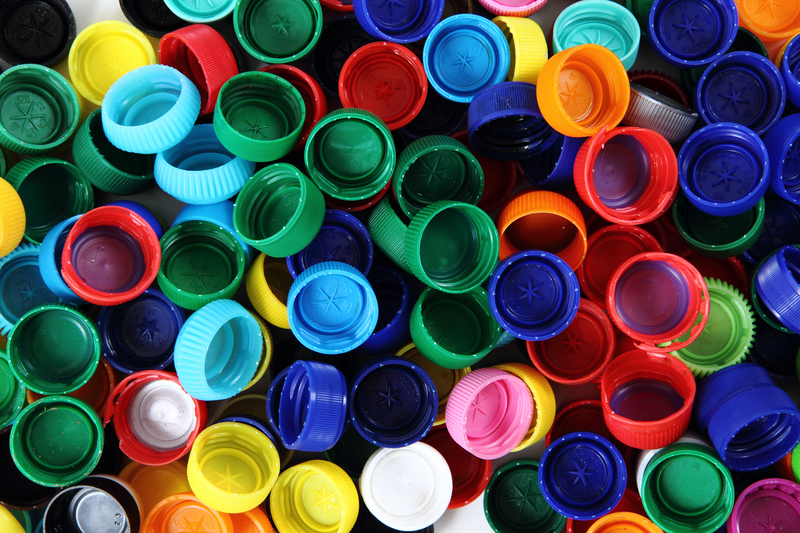Your Role in Proper PPE Waste Disposal and Environmental Protection
In today's world, personal protective equipment (PPE) has become essential for safeguarding health and safety--whether in hospitals, workplaces, or public spaces. However, as the usage of PPE has skyrocketed, so has the challenge of proper PPE waste disposal. Improperly discarded masks, gloves, and gowns have created environmental risks that demand immediate attention. This article explores your responsibility in PPE waste management, offering valuable guidance to protect both public health and the environment.
Understanding PPE: What Is It and Why Is It Important?
Personal protective equipment is designed to shield individuals from health hazards. Common examples of PPE include:
- Face masks and respirators
- Gloves
- Face shields and goggles
- Aprons and gowns
The increased reliance on these items, particularly during events like the COVID-19 pandemic, has saved countless lives. However, it has also resulted in a surge in PPE waste, raising concerns about proper PPE disposal practices and their impact on environmental protection.

The Environmental Impact of Improper PPE Waste Disposal
Why Is Improper PPE Disposal Harmful?
PPE items are mostly made from plastics, synthetic fibers, and other non-biodegradable materials. When these are discarded irresponsibly, they contribute to environmental degradation in several ways:
- Land pollution: PPE debris can persist in landfills for hundreds of years.
- Water pollution: Discarded PPE often finds its way into rivers, lakes, and oceans, posing hazards to aquatic ecosystems.
- Wildlife threat: Animals may ingest or become entangled in PPE waste, leading to injuries or fatalities.
- Microplastics: As PPE items break down, they release microplastics into the environment, entering food chains and potentially affecting human health.
Real-World Examples of PPE Pollution
Numerous reports from environmental organizations have documented face masks littering beaches, gloves floating in water bodies, and heaps of PPE crowding landfills. This visual pollution is not only unsightly but also an active threat to biodiversity and ecological balance.
Your Role in Proper PPE Waste Disposal
Personal Responsibility Matters
While governments and organizations have developed guidelines and disposal infrastructure, real change happens when individuals like you commit to suitable PPE waste management. Here's how you can make a difference:
- Stay informed: Learn about local regulations for PPE disposal.
- Spread awareness: Educate family, colleagues, and friends about the environmental impact of PPE waste.
- Lead by example: Practicing responsible disposal inspires those around you to do the same.
Best Practices for PPE Waste Disposal at Home and Work
Proper PPE waste is not just about tossing used items into the trash. It involves mindful steps to mitigate any environmental or health risks:
At Home
- Designate a PPE bin: Use a separate bag or container for used masks, gloves, and other PPE. Preferably, use a lined bin with a lid.
- Do not litter: Never dispose of PPE in public areas, streets, or natural environments.
- Seal and label: Before disposal, tie the bag securely and clearly label it as "PPE waste" to alert waste handlers.
- Follow local guidelines: Some areas may require PPE waste to be treated as hazardous or medical waste. Always check your municipality's protocols.
In the Workplace
- Training: Ensure all staff members are trained on correct PPE disposal protocols.
- Clearly marked bins: Place designated, clearly labeled PPE disposal bins in accessible locations.
- Protective measures for waste collectors: Waste handlers should wear appropriate PPE themselves when managing and transporting PPE waste.
- Documentation: Maintain records of PPE waste amounts and disposal methods to ensure compliance with regulations.
For Medical and High-Risk Settings
- Biohazard protocols: Treat all used PPE as infectious waste. Use red or yellow bags and follow hospital incineration guidelines.
- Do not mix: Keep PPE waste separate from general or recyclable materials.
Innovative Solutions and Alternatives for PPE Waste Management
Recycling and Upcycling Efforts
While most PPE is single-use, there are emerging technologies that can convert used PPE into fuels, construction materials, and even reusable products. Some companies and research institutions are piloting waste-to-energy projects and chemical recycling for PPE.
- Melt-blown recycling: Specialized facilities can reclaim plastic fibers from used masks.
- Upcycling: Creative initiatives transform PPE waste into items like bags, tiles, or art.
You can support these efforts by:
- Participating in collection programs, if available in your area.
- Advocating for extended producer responsibility among manufacturers and retailers.
Choosing Reusable PPE When Appropriate
For non-medical use, consider washable, reusable masks or gloves. This simple switch significantly reduces single-use PPE waste and its associated environmental impact.
How You Can Advocate for Environmental Protection
Be an Environmental Steward
Your actions, however small, reverberate across your community and beyond. Proper disposal of PPE waste is a form of environmental stewardship. Here's how you can amplify your positive impact:
- Join community cleanups: Volunteer for local campaigns targeting PPE litter.
- Support environmental organizations: Donate to or partner with groups focused on reducing pollution.
- Share resources: Use social media to spread messages about responsible PPE use and disposal.
- Lend your voice: Advocate for stronger policies and regulations on PPE production, use, and waste management.
Educating Others
Become a change agent by:
- Organizing informational workshops in your community or workplace.
- Sharing reliable resources and infographics about proper PPE disposal methods.
- Encouraging neighbors to follow local disposal rules.
Common Misconceptions about PPE Waste Disposal
-
Myth 1: "PPE can go in the recycling bin."
Fact: Most PPE items cannot be recycled through standard curbside programs. They contaminate recycling streams and must be managed separately. -
Myth 2: "Biodegradable masks don't harm the environment."
Fact: While better than conventional masks, even biodegradable options require proper waste management to realize their benefits. -
Myth 3: "Throwing PPE in the street won't make a difference."
Fact: Every littered PPE item contributes to pollution and can travel great distances through wind and water.
Global and Local Regulations on PPE Waste
Governments worldwide have introduced guidelines for PPE waste disposal and environmental protection. Examples include:
- WHO and CDC recommendations: Urge healthcare facilities to treat used PPE as infectious waste.
- Municipal policies: Some cities require PPE waste separation and have set up dedicated collection points.
- Environmental fines: Littering PPE in public places can result in hefty fines in certain regions.
Familiarize yourself with both international guidelines and your local mandates to ensure full compliance and optimal environmental protection.
Steps You Can Take Right Now For Responsible PPE Waste Disposal
You don't need to wait for sweeping policy changes to do your part. Here's a quick checklist for personal and community action:
- Always dispose of used PPE in the right bin: Avoid regular recycling and compost bins unless specifically permitted.
- Keep PPE waste secure: Tie bags tightly to avoid spilling or wind dispersal.
- Limit single-use PPE when possible: Opt for reusable alternatives for low-risk activities.
- Never flush PPE items: This clogs sewage systems and leads to waterway pollution.
- Report illegal dumping: Notify local authorities if you spot improperly discarded PPE waste.

The Future of PPE and Environmental Sustainability
As awareness about PPE waste management grows, manufacturers are innovating with biodegradable, compostable, or recyclable PPE materials. Investing in research, infrastructure, and public education will further ease the environmental footprint of PPE use. Your continued commitment is crucial to ensure these advancements have meaningful impact.
Conclusion: Empower Yourself for Change
Proper PPE waste disposal is not just a matter of personal hygiene or regulatory compliance; it is a powerful tool for environmental protection. Your daily decisions shape our collective future--be it in the way you dispose of your PPE, educate others, or advocate for greener policies. Make conscious choices, understand your responsibilities, and inspire your community to do the same. By taking action today, you become a vital part of the solution, helping safeguard the planet for generations to come.
Together, let's aim for a safer, cleaner, and more sustainable world. Your role in PPE waste disposal truly matters!
